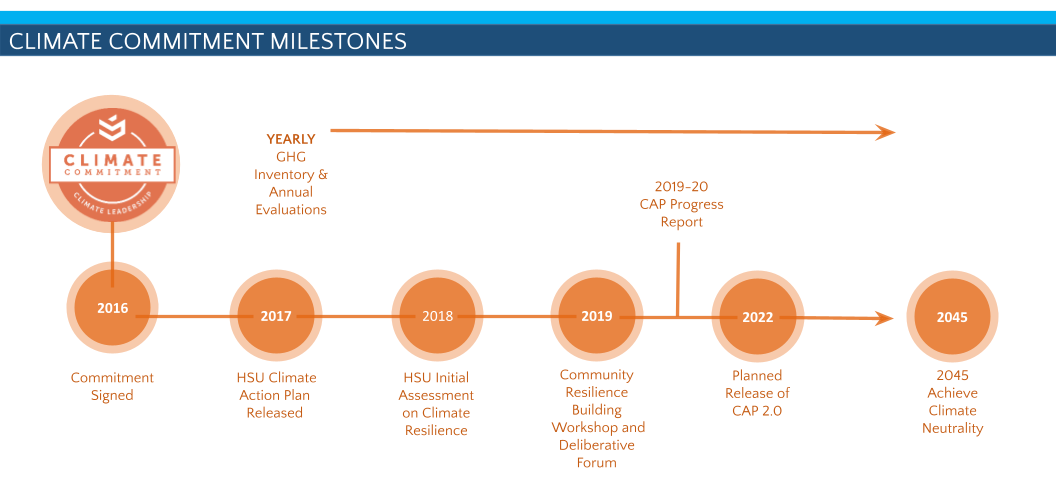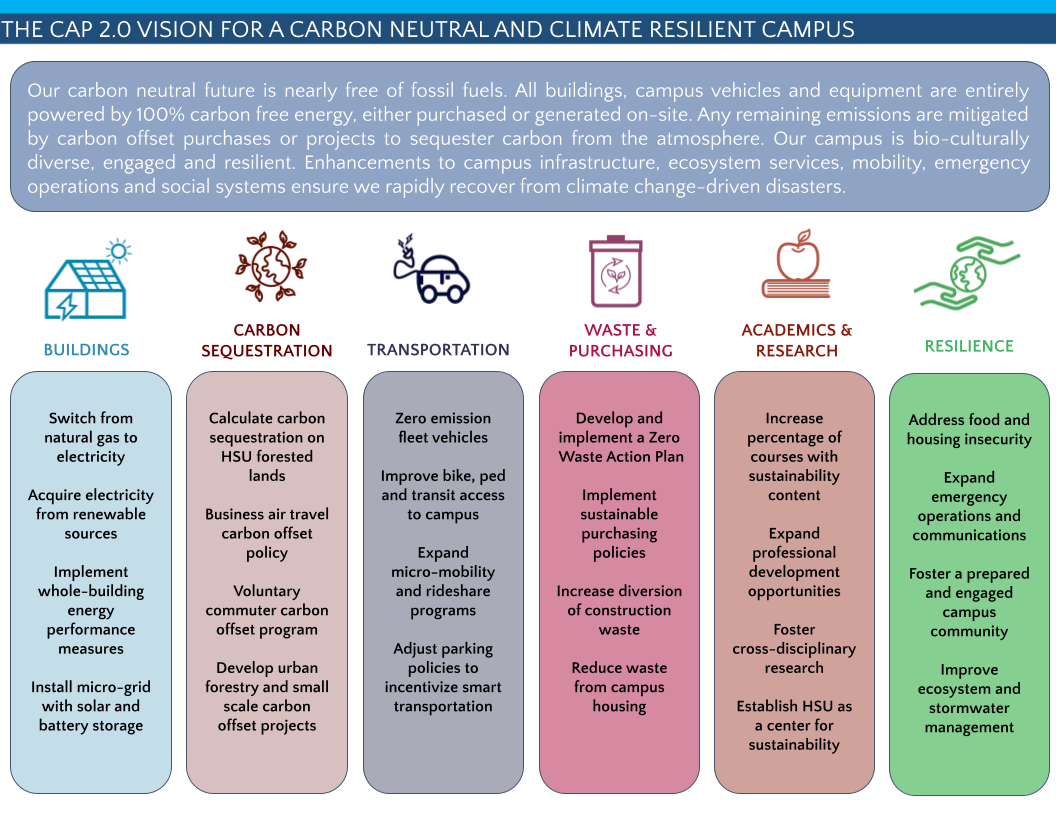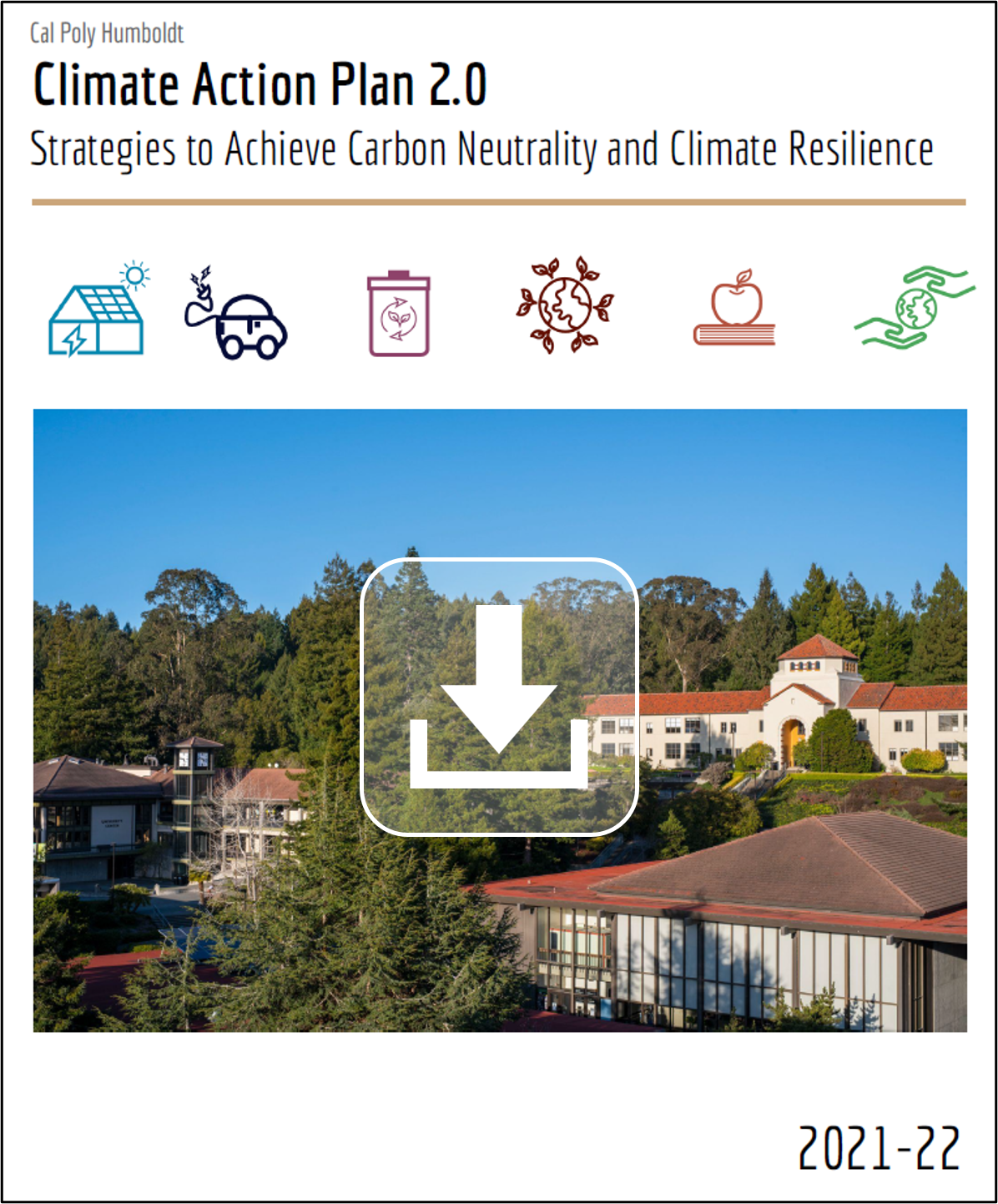Breadcrumb
Climate Action Planning & Resilience
Our Climate Commitment
Humboldt signed onto the Second Nature Climate Commitment in 2016, setting us on a course to curtail greenhouse gas emissions from campus buildings, operations and related activities, and to integrate climate adaptation into campus planning. A year later we released the Climate Action Plan (CAP 1.0), with the goal of reducing facility and fleet greenhouse gas emissions to 1990 levels by 2020. We achieved that goal and have continued to meet important milestones along the Climate Commitment timeline. With the release of the CAP 2.0, Cal Poly Humboldt is well on its way towards achieving its commitments.

Our Vision for a Carbon Neutral and Resilient Campus

Our Plan

The Climate Action Plan 2.0 provides a roadmap for further drawing down greenhouse gas emissions. It combines reduction strategies and renewable energy generation with efforts to sequester carbon and offset GHG emissions to achieve carbon neutrality by 2045. The plan also lays out actions to foster equity and the integration of sustainability and climate action into all facets of the university. Additionally, CAP 2.0 includes strategies to ensure the campus can withstand and recover rapidly from climate change driven disruptions. Watch this short video on the CAP 2.0, and download the plan!





